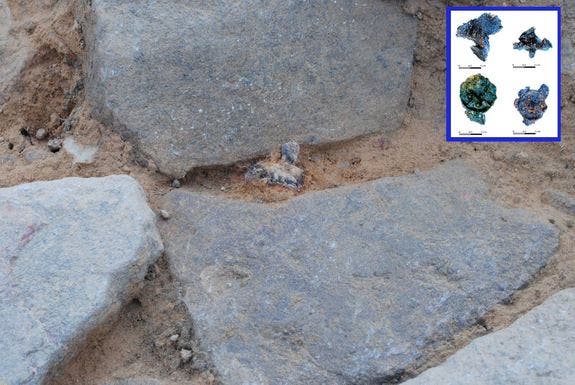A group of archeologists have identified the oldest known Roman military fortress in Germany, located near the small town of Hermeskei. The site has been hypothesized as once being a roman military encampment since it was first discovered in the 19th century, however only after recently surfaced evidence, coupled with modern analysis tools, could it be confirmed.
Apparently the camp was built as an outpost housing and protecting roman legions during the Galic Wars in the years 50 B.C. The site itself, measured at 260,000 square meters, has been in the archeologists’ attention since the 19th century, however solid evidence wasn’t discovered until recently. Unfortunately, agricultural exploitation had much of the wall and camp destroyed, but there was still some tantalizing signs left.
“From an archaeological point of view our findings are of particular interest because there are only few sites known that document Caesar’s campaign in Gaul,” researcher Sabine Hornung, of Johannes Gutenberg University of Mainz (JGU), told LiveScience in an email.
The team of researchers from Johannes Gutenberg University Mainz (JGU) first started working at the camp in March 2010. Through a systematic workflow, the archeologists were able to determine the size and shape of the camp, which was fortified by means of an earth wall and a ditch. They also found an 18-acre (76,000-square-meter) annex that incorporated a spring, which may have supplied water to the troops. Judging by its size, the researchers believe the camp could have house a couple thousand roman troops.

Paving stones discovered at the Roman military camp. Here a shoe nail from a Roman soldier can be seen between the stones. (c) Sabine Hornung, Arno Braun
Having the site mapped, targeted digs were made which allowed for the excavation of one of the fort’s gates in 2011. In the gaps between stones that paved the gateway, the archaeologists hit the jackpot – one of those subtle clues, which when identified can completely turn around an investigation. There, the archaeologists found numerous shoe nails originating from the sandals of Roman soldiers. These nails, just one inch in diameter, had the pattern of a cross with four studs, which was typical for that time period. This, coupled with pottery shards analysis which confirmed the same time period, namely during the Galic Wars, made the claim that this site was indeed a roman fort irrefutable.
What makes this camp special, however, isn’t the fact that it’s the earliest roman fort found in Germany, but its relationship with the neighboring site of Hunnenring (Circle of the Huns), a fortified Celtic settlement only 5 kilometers away. The settlement was occupied by the Treveri tribe which mysteriously left the camp around the middle of the first century B.C. With this recent confirmation of the roman site, the pieces of the puzzle come together and suddenly a clear fresco of this particular episode of history is revealed. In his “De Bello Gallico,” Julius Caesar reported that the tribe of the Treveri was split into anti-Roman and pro-Roman factions. During the years 53 and 51 BC roman retaliations were conducted against the rebels, and the Hermeskei roman site most likely also served as a launching pad.
“The most exciting part of our discovery is that it seems possible to link the military camp to an episode of world history by trying to make our dating just a little more precise,” Hornung told LiveScience. “It is already highly probable that legionaries were camped there during the Gallic War, but hopefully one day we can tell, whether this happened 53 or rather 51 B.C.”
Findings have been published in the German journal Archäologisches Korrespondenzblatt.









